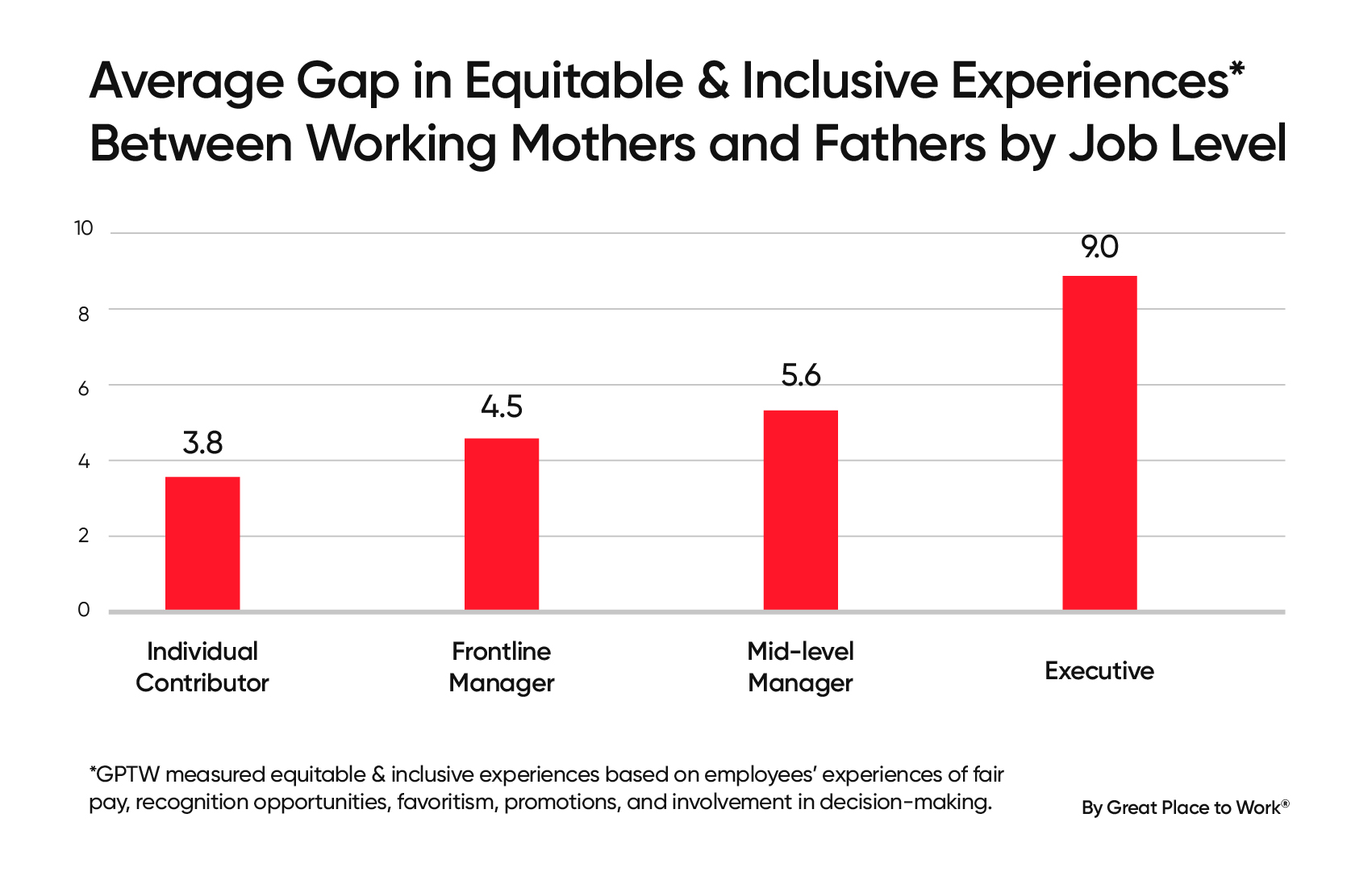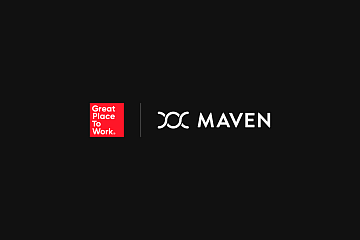
DEIB, Employee Experience, Parents at work, Women in the Workplace
Despite great progress, executive mothers are struggling at work. The higher they climb, the higher the “career ladder tax” they are paying to get ahead.
This year, Great Place To Work® conducted the largest-ever study of working parents to understand their workplace experience, the unique challenges they face and how leaders can support them.
Our 2021 report, Working Parents, Burnout & the Great Resignation, sheds light on the many challenges – aggravated by the pandemic – that parents are facing in the workplace.
The motherhood penalty
For career women, motherhood can come with a penalty. The typical mother will see a decrease in her earning power by 4%, while men see their earning power increase by 6% upon becoming a father.
What does this mean?
Well, it could mean that some employers still hold archaic values – those that suggest women should be caregivers while men should be the breadwinner of the household.
The penalty also results from caregiving responsibilities falling mostly on mothers; the average mother spends 38 hours a week on childcare and household responsibilities, compared to just 18 hours a week by men. The disparity is even more stark for mothers of color; many of whom bare close to all childcare and household responsibilities.
Some entering motherhood feel forced into part-time or lower paying roles to make time for their family. Others decide to give up their career entirely to dedicate 100% of their time to raising young kids and are happy to make the choice.
But the choice doesn’t come without consequence, however. According to a study published by the American Sociological Review, stay-at-home moms are half as likely to land a job interview as moms who had been laid off from a previous job. So, moms risk difficulty re-entering the workforce when the time is right.
The childcare crisis is also stripping choice from mothers who want to work. Without adequate childcare benefits, mothers must trade in their day jobs for unpaid childcare responsibilities. In lieu of spending a large portion of their income on childcare, some mothers are making the sacrifice and leaving their hopes for a successful career behind.
In addition to mothers who have left their careers, there are those mothers who don’t have a partner with whom to share financial responsibilities. In spite of how badly they want to dedicate their time to their family, their income from work is a necessity.
There are also mothers who have the resources to leave the workforce but have chosen to continue up the career ladder, regardless of how challenging the climb to the top is.
How are executive mothers navigating work and life? It’s no easy task and the career ladder tax for working mothers with high ambition is high. Mothers in executive roles continue to have a very different experience at work than their male counterparts.

The experience gap for men and women in similar roles is not simply shaped by the employer. It’s informed by systems of belief, family structures, institutions and more. As we move the needle, and create more equitable workplaces for all, we’re also exposing a history of sexism with deep, rotten roots.
Joanna S. Lublin, author of Power Moms: How Executive Mothers Navigate Work and Life, illuminates the challenges career women continue to face. Even those Gen Xers who were lucky enough to be raised by trailblazing women who refused to choose between kids and career.
She tells stories of daughters who became leaders themselves, following in the footsteps of their audacious Boomer mothers.
More than ever, today’s leading women (and men) were raised by working mothers. In a recent Forbes interview, Lublin shares an anecdote of an executive mother she interviewed for the book. In the story, the woman in invited to a lunch with other VPs in the company.
As the only woman in the room she was asked to “check if the lunch had arrived.” In response, a coworker came to her defense and said “if you want to know where the food is, go check yourself. It is not her responsibility to bring the lunch.” When asked if that moment surprised her, the VP responded “no, because his mother was a working mom who raised him right.”
When asked what the most pervasive and difficult challenges “power moms” were still facing, Lublin said it came down to two things: “How women view themselves and their role in the world, and their unwillingness to ask for help.”
In the Forbes interview, Lublin shared more anecdotes about these power moms asking their male partners to take on more household and childcare responsibility, and the repercussions at home as their careers began to soar.
According to this year’s Great Place To Work report, the inequitable burden of childcare placed on women is only part of the issue. Working mothers aren’t seeing the same gains as working fathers as they move up the career ladder.
Our study revealed that across managerial roles, moms have lower results than dads for equity in recognition, promotions, compensation, involvement and favoritism. These gaps more than double as employees move up in managerial responsibility. The greatest gaps happen between mothers and fathers in executive positions.
So, how do you create an equitable and inclusive workplace experience for leading moms?
Lublin’s “power moms” need what their subordinates need. They want to know and believe they are being paid fairly, are being recognized and rewarded for their hard work, and that promotions are going to those who best deserve them.
To learn more about how to support working parents, read our full report
Working Parents, Burnout & the Great Resignation. 490K+ working parents have spoken. Here are 5 keys to attracting, retaining, and sustaining them.
Download the report













